Died 539 BC, Babylonia | ||
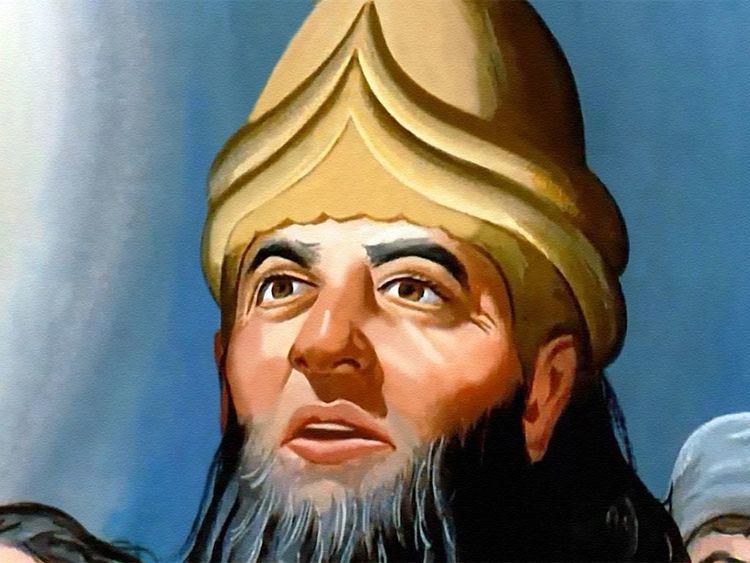 | ||
Parents Nabonidus, Nitocris of Babylon Similar | ||
Belshazzar johnny cash
Belshazzar (/bɛlˈʃæzər/; Biblical Hebrew בלשאצר; Akkadian: Bēl-šarra-uṣur; Greek: Balthazar, from Akkadian, "Bel Protect the King";) was Co-regent of Babylon, governing the country after his father, King Nabonidus, went into exile in 550 BCE. Belshazzar died after Babylon fell to the Persians in 539 BCE.
Contents
- Belshazzar johnny cash
- Belshazzar s feast moody bible story
- Belshazzars feast
- King of Babylon
- Achaemenid invasion
- Jewish tradition
- References
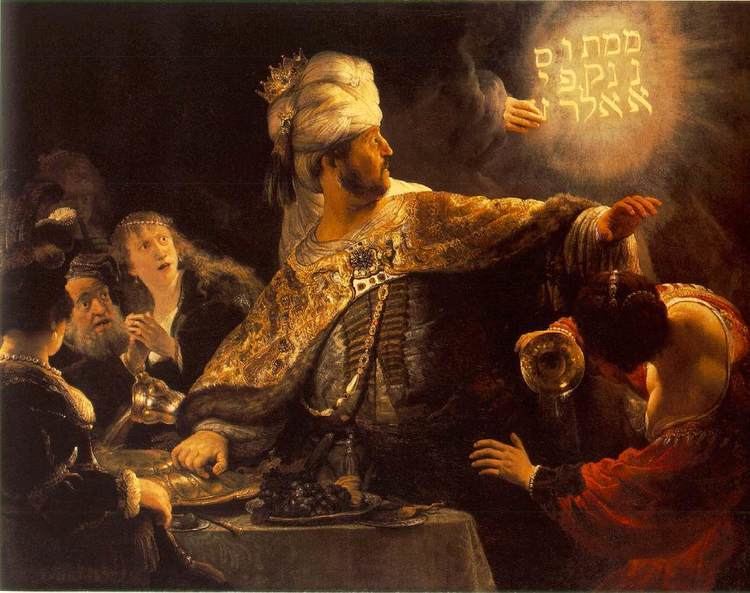
According to the Book of Daniel, Belshazzar holds a last great feast at which he sees a hand writing on a wall with the Aramaic words mene, mene, tekel, upharsin, which Daniel interprets as a judgment from God foretelling the fall of Babylon.
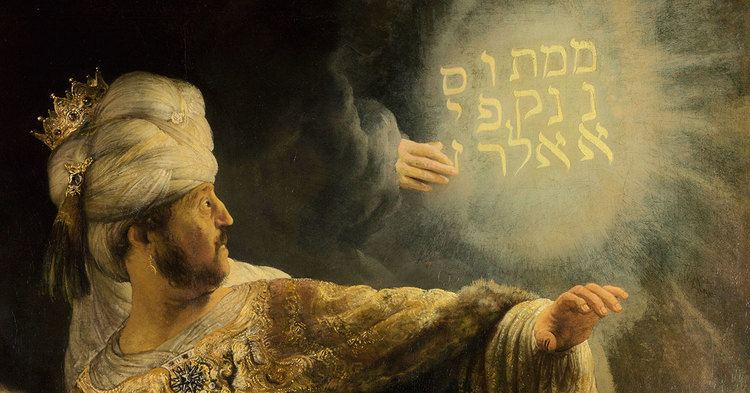
Belshazzar s feast moody bible story
Belshazzar's feast
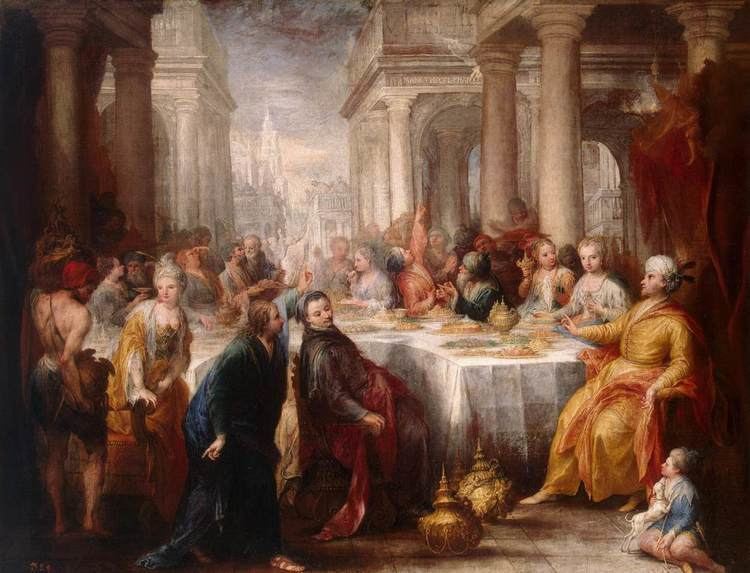
Chapter 5 of the Book of Daniel tells the story of Belshazzar and the writing on the wall. In the story, Belshazzar holds a feast, during which Belshazzar intends his guests to drink from the temple treasures from Jerusalem while praising Babylonian gods. He then sees a hand writing on the palace wall. Daniel is called to interpret the writing after Belshazzar's wise men are unable.
King of Babylon
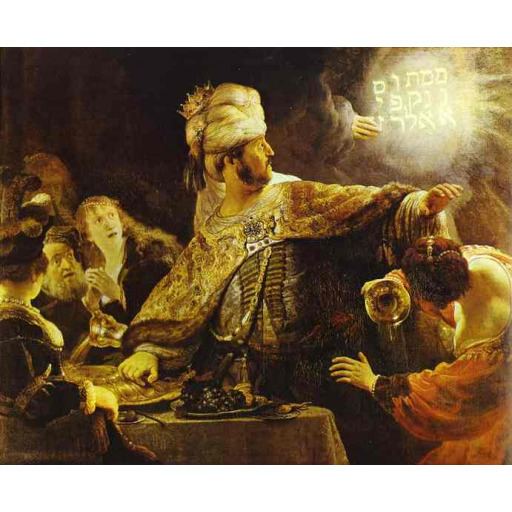
The inscriptions of the Edict of Balshazzar (YBT 6 103) gives Belshazzar the title "crown prince". The Aramaic Qumran scroll 4Q243 fragment 2; Lines 1–2 names Belshazzar as vice-regent in Babylon during the absence of Nabonidus, while the book of Daniel gives Belshazzar's title as "king" (Dan. 5:1–30).
Since the 19th century, some historians such as Robert Dick Wilson and W. H. Stevenson have disputed Belshazzar's reign as a king. Both Wilson and Stevenson do, however, acknowledge Belshazzar as a legitimate historic figure. In the Babylonian chronicles, Belshazzar is commanding the armies in the North while Nabonidus remains in Babylon. Later, after a break in the inscription, Nabonidus is with the army. John H. Raven suggests that while Nabonidus was with the Army, Belshazzar could have been placed in authority at the Capitol. Thus, it would support Daniel's position as being "third ruler of the kingdom" (Daniel 5:29) since Belshazzar was second only to his father. Despite the overwhelming evidence that Robert D. Wilson had uncovered concerning Belshazzar's subordinate functions to Nabonidus, John H. Raven argues that Belshazzar would have been addressed as king and spoken of as such.
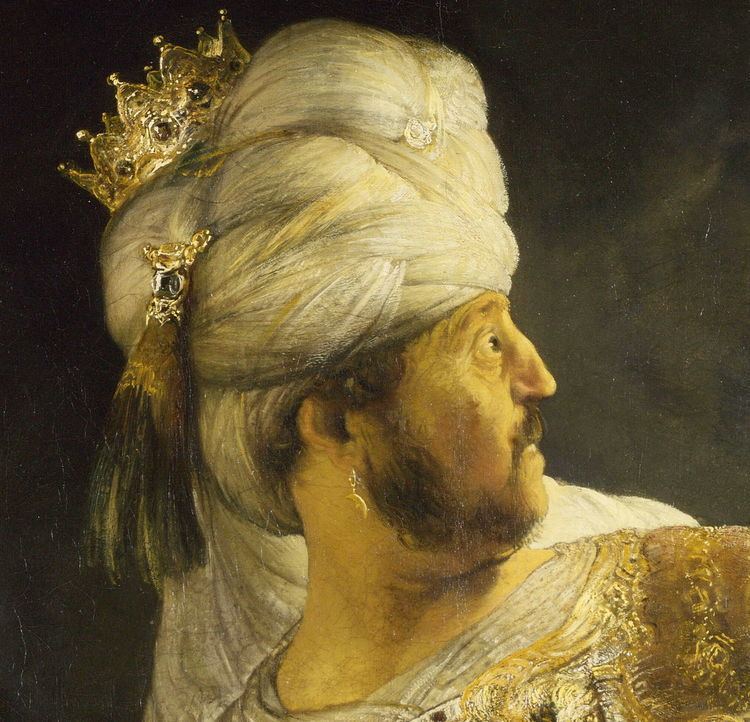
In Cyropaedia (4.6.3), Xenophon refers to a son of the Babylonian king whom he also calls a king, and this son/king was reigning in Babylon when Cyrus was preparing his army to advance against the city. Xenophon, without giving his name, also repeatedly refers to the "king" that was slain when Babylon fell to the army of Cyrus.
Achaemenid invasion
Cyropaedia is a historical romance written in the early 4th century BCE by Xenophon and it is considered to be a partly fictional biography of Cyrus the Great. Cyropaedia (4.6.3), but not Herodotus, describes two kings reigning over the Babylonian kingdom when the city fell, father and son, and it was the younger king, who was reigning when the city was taken and who was killed that night. Cyropaedia does not name either king.
Cyropaedia (7.5.20-33), in agreement with Herodotus (I.292), says that the combined Median and Persian army entered the city via the channel of the Euphrates river, the river having been diverted into trenches that Cyrus had dug for the invasion, and that the city was unprepared because of a great festival that was being observed. Cyropaedia (7.5.26-35) describes the capture of Babylon by Gobryas, who led a detachment of men to the capital and slew the king of Babylon. In 7.5.25, Gobryas remarks that "this night the whole city is given over to revelry", including to some extent the guards. Those who opposed the forces under Gobryas were struck down, including those outside the banquet hall. The capture of the city, and the slaying of the son king of the king (4.6.3), is described in Cyropaedia (7:5.26-30) as follows:
(26) Thereupon they entered; and of those they met some were struck down and slain, and others fled into their houses, and some raised the hue and cry, but Gobryas and his friends covered the cry with their shouts, as though they were revellers themselves. And thus, making their way by the quickest route, they soon found themselves before the king’s palace. (27) Here the detachment under Gobryas and Gadatas found the gates closed, but the men appointed to attack the guards rushed on them as they lay drinking round a blazing fire, and closed with them then and there. (28) As the din grew louder and louder, those within became aware of the tumult, till, the king bidding them see what it meant, some of them opened the gates and ran out. (29) Gadatas and his men, seeing the gates swing wide, darted in, hard on the heels of the others who fled back again, and they chased them at the sword’s point into the presence of the king. (30) They found him on his feet, with his drawn scimitar in his hand. By sheer weight of numbers they overwhelmed him: and not one of his retinue escaped, they were all cut down, some flying, others snatching up anything to serve as a shield and defending themselves as best they could.
Both Xenophon and Daniel 5 describe the demise of Belshazzar as occurring on the night that the city was taken. Xenophon, Herodotus, and Daniel agree that the city was taken by surprise, suddenly, at the time of a festival, and with some (but apparently not much) loss of life. Since Cyropaedia, the silence of other classical sources regarding Belshazzar led to the denial of the historicity of Daniel’s naming Belshazzar as the king who was slain, until cuneiform evidence was found corroborating the existence of Belshazzar as the king reigning in Babylon.
Jewish tradition
Belshazzar appears in many works of classical Jewish rabbinic literature. The chronology of the three Babylonian kings is given in the Talmud (Megillah 11a-b) as follows: Nebuchadnezzar reigned forty-five years, Evil-merodach twenty-three, and Belshazzar was monarch of Babylonia for two years, being killed at the beginning of the third year on the fatal night of the fall of Babylon (Meg. 11b).
The references in the Talmud and the Midrash to Belshazzar emphasize his tyrannous oppression of his Jewish subjects. Several passages in the Prophets are interpreted as though referring to him and his predecessors. For instance, the passage, "As if a man did flee from a lion, and a bear met him" (Amos v. 19), the lion is said to represent Nebuchadnezzar, and the bear, equally ferocious if not equally courageous, is Belshazzar. (The book of Amos., nevertheless, is pre-exilic.)
The three Babylonian kings are often mentioned together as forming a succession of impious and tyrannical monarchs who oppressed Israel and were therefore foredoomed to disgrace and destruction. The verse in Isaiah xiv. 22, And I will rise up against them, saith the Lord of hosts, and cut off from Babylon name and remnant and son and grandchild, saith the Lord, is applied by these interpretations to the trio: "Name" to Nebuchadnezzar, "remnant" to Evil-merodach, "son" to Belshazzar, and "grandchild" Vashti (ib.). The command given to Abraham to cut in pieces three heifers (Genesis 15:9) as a part of the covenant established between him and his God, was thus elucidated by readers of Daniel as symbolizing Babylonia, which gave rise to three kings, Nebuchadnezzar, Evil-merodach, and Belshazzar, whose doom is prefigured by this act of "cutting to pieces" (Midrash Genesis Rabbah xliv.).
The Midrash literature enters into the details of Belshazzar's death. Thus the later tradition states that Cyrus and Darius were employed as doorkeepers of the royal palace. Belshazzar, being greatly alarmed at the mysterious handwriting on the wall, and apprehending that someone in disguise might enter the palace with murderous intent, ordered his doorkeepers to behead anyone who attempted to force an entrance that night, even though such person should claim to be the king himself. Belshazzar, overcome by sickness, left the palace unobserved during the night through a rear exit. On his return the doorkeepers refused to admit him. In vain did he plead that he was the king. They said, "Has not the king ordered us to put to death any one who attempts to enter the palace, though he claim to be the king himself?" Suiting the action to the word, Cyrus and Darius grasped a heavy ornament forming part of a candelabrum, and with it shattered the skull of their royal master (Cant. R. iii. 4).
